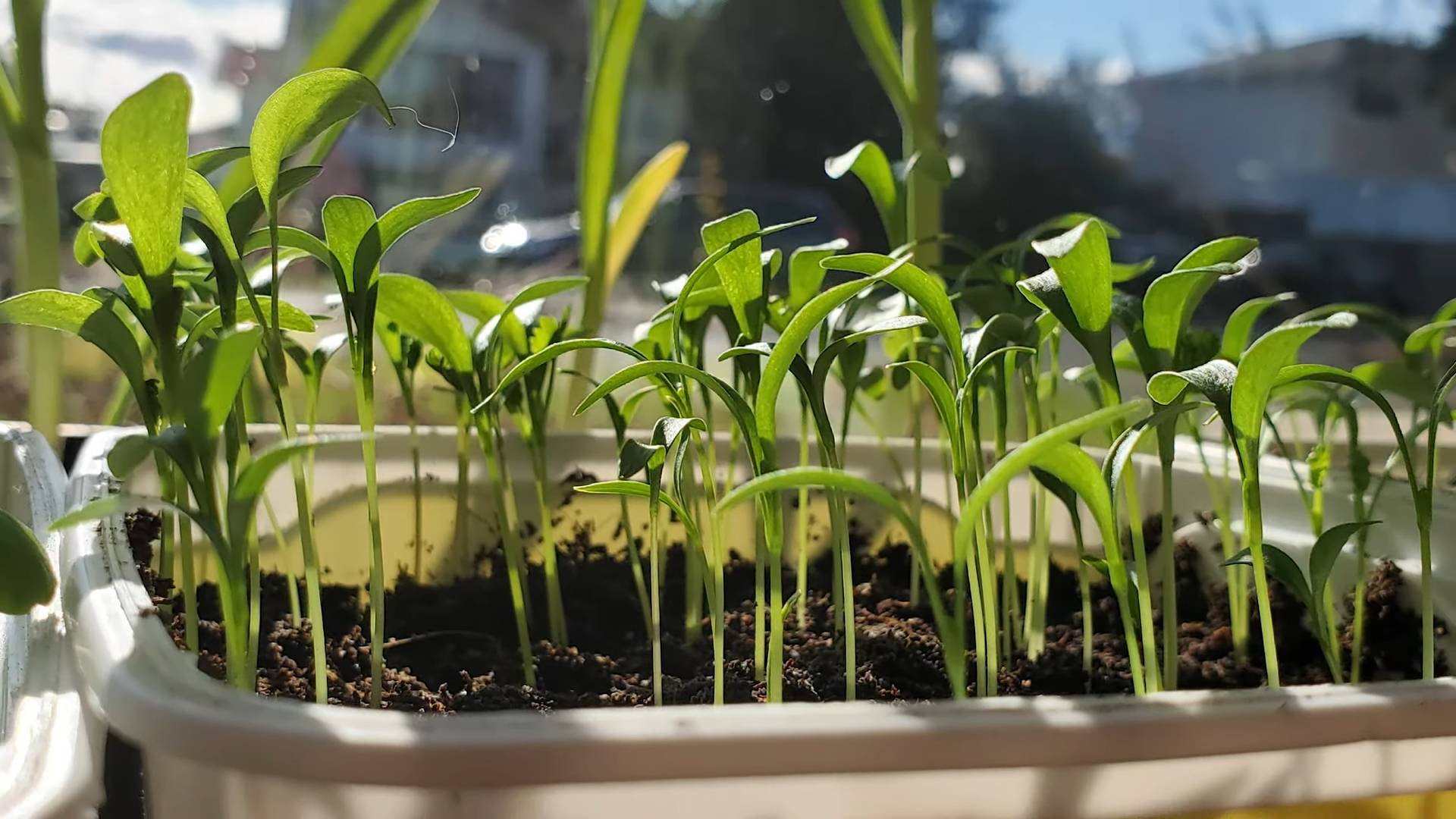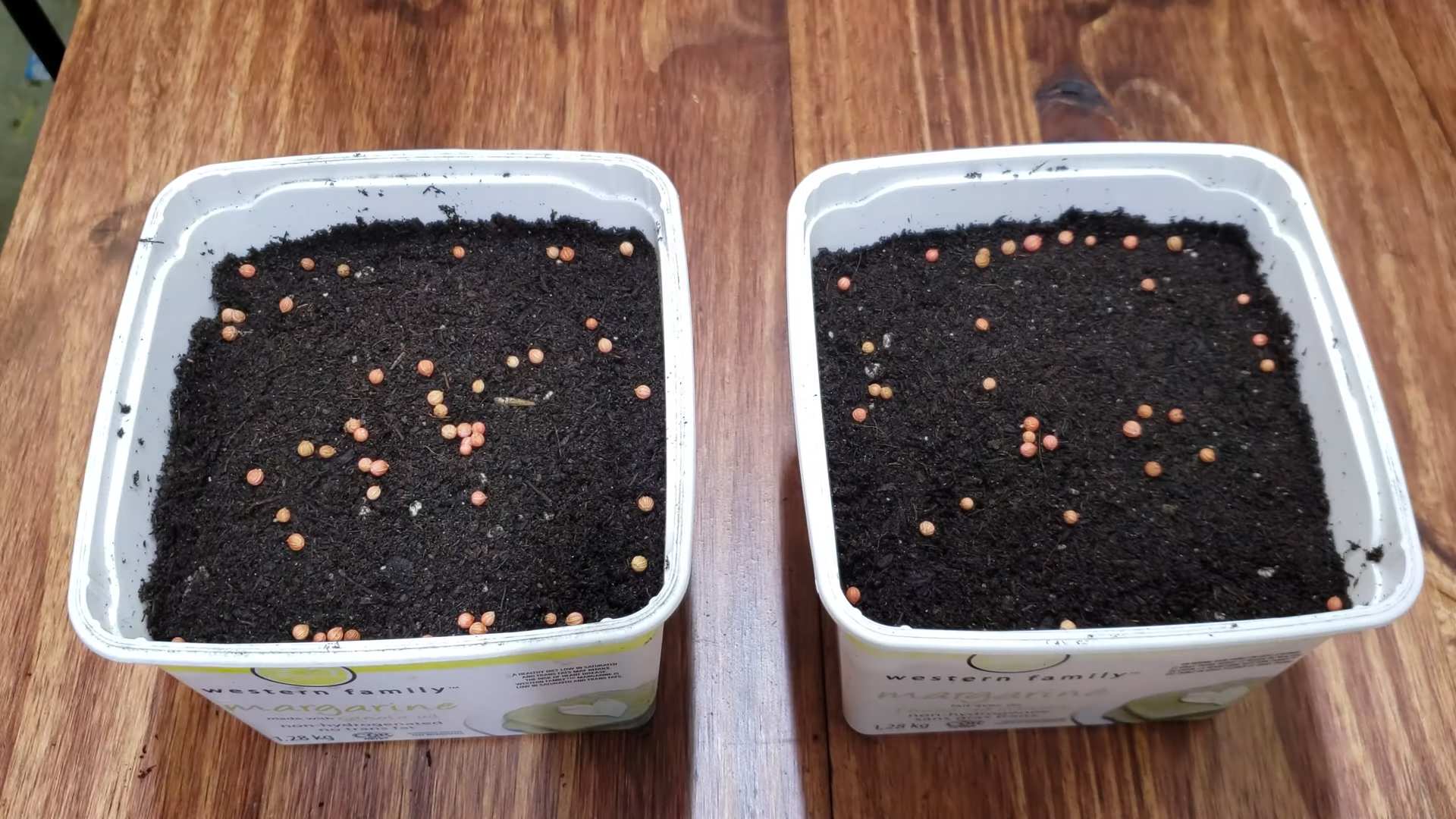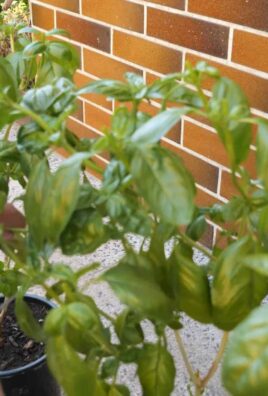Growing Cilantro Indoors can feel like a culinary superpower! Imagine having fresh, vibrant cilantro at your fingertips, ready to elevate your tacos, salsas, and stir-fries, no matter the season. Forget those sad, wilted bunches from the grocery store – we’re talking about a thriving, fragrant herb garden right in your kitchen.
Cilantro, also known as coriander (the seeds), has a rich history, dating back to ancient Egypt and even mentioned in the Bible. For centuries, cultures around the world have cherished it for its unique flavor and medicinal properties. But let’s be honest, sometimes growing cilantro can be a bit… temperamental. It’s notorious for bolting (going to seed) quickly, especially in hot weather. That’s where these DIY tricks come in!
I’m going to share my favorite, tried-and-true methods for successfully growing cilantro indoors. These aren’t just random tips; they’re the secrets I’ve learned over years of experimenting, tweaking, and yes, even a few cilantro casualties along the way. Whether you’re a seasoned gardener or a complete beginner, these hacks will help you overcome common challenges and enjoy a continuous supply of fresh cilantro. Because who doesn’t want to add a burst of fresh flavor to their meals without constantly running to the store?

Growing Cilantro Indoors: A Step-by-Step Guide
Okay, cilantro lovers, listen up! Are you tired of buying cilantro at the grocery store only to have it wilt away in your fridge within days? I know I was! That’s why I decided to take matters into my own hands and learn how to grow cilantro indoors. And guess what? It’s totally doable, even if you don’t have a green thumb. I’m going to walk you through everything you need to know to have a thriving cilantro patch right in your kitchen.
What You’ll Need
Before we dive in, let’s gather our supplies. Here’s what you’ll need to get started:
* Cilantro Seeds: You can find these at most garden centers or online. Make sure you’re getting seeds specifically for cilantro (Coriandrum sativum).
* Potting Mix: Use a well-draining potting mix. Avoid using garden soil, as it can be too heavy and compact for container gardening.
* Pots: Choose pots that are at least 6 inches deep and wide. Cilantro has a taproot, so it needs room to grow. I prefer using terracotta pots because they allow the soil to breathe, but plastic pots work too. Just make sure they have drainage holes!
* Grow Lights (Optional but Recommended): While cilantro can grow indoors with natural light, it often gets leggy and weak without supplemental lighting. Grow lights will help your cilantro stay compact and bushy.
* Spray Bottle: For misting the soil.
* Small Shovel or Trowel: For planting the seeds.
* Watering Can or Pitcher: For watering the plants.
* Seed Starting Tray (Optional): If you want to start your seeds indoors before transplanting them.
Preparing for Planting
Before we get our hands dirty, let’s prep our seeds and pots.
1. Soaking the Seeds (Optional but Recommended): Cilantro seeds have a hard outer shell, so soaking them can help speed up germination. Place the seeds in a small bowl of water and let them soak for 12-24 hours. This will soften the shell and make it easier for the seedlings to emerge.
2. Choosing Your Pot: As I mentioned earlier, make sure your pot is at least 6 inches deep and wide. Clean your pot thoroughly with soap and water to remove any dirt or debris.
3. Filling the Pot: Fill your pot with the potting mix, leaving about an inch of space at the top. Gently pat down the soil to remove any air pockets.
Planting the Cilantro Seeds
Now for the fun part – planting!
1. Sowing the Seeds: Sprinkle the cilantro seeds evenly over the surface of the soil. You can plant several seeds in each pot, as not all of them will germinate. I usually aim for about 5-7 seeds per pot.
2. Covering the Seeds: Lightly cover the seeds with a thin layer of potting mix, about ¼ inch deep.
3. Watering the Soil: Gently water the soil using a spray bottle or watering can. Be careful not to overwater, as this can cause the seeds to rot. The soil should be moist but not soggy.
4. Placement: Place your pot in a sunny location that receives at least 6 hours of sunlight per day. A south-facing window is ideal. If you’re using grow lights, position them about 6-12 inches above the soil surface.
Caring for Your Cilantro
Now that your cilantro is planted, it’s time to provide it with the care it needs to thrive.
1. Watering: Cilantro needs consistent moisture to grow well. Water the soil whenever the top inch feels dry to the touch. Avoid overwatering, as this can lead to root rot. I usually water my cilantro every 2-3 days, but this will depend on the temperature and humidity in your home.
2. Light: As I mentioned earlier, cilantro needs plenty of light to grow. If you’re not using grow lights, make sure your cilantro is placed in a sunny location. If you notice your cilantro is getting leggy (tall and spindly), it’s likely not getting enough light.
3. Temperature: Cilantro prefers cooler temperatures, between 60-75°F (15-24°C). Avoid placing your cilantro near heat sources, such as radiators or vents.
4. Fertilizing: Cilantro doesn’t need a lot of fertilizer, but a light feeding every few weeks can help it grow. Use a balanced liquid fertilizer diluted to half strength.
5. Pinching Back: Once your cilantro plants are a few inches tall, you can start pinching back the stems to encourage bushier growth. Simply snip off the top inch or two of the stems. This will also delay bolting (going to seed).
Harvesting Your Cilantro
The best part of growing your own cilantro is, of course, harvesting it!
1. When to Harvest: You can start harvesting cilantro leaves once the plants are about 6-8 inches tall.
2. How to Harvest: Use scissors or pruning shears to cut the stems near the base of the plant. Avoid cutting more than one-third of the plant at a time, as this can stress it out.
3. Harvesting Regularly: Harvesting cilantro regularly will encourage it to produce more leaves.
Dealing with Common Problems
Even with the best care, you might encounter some problems while growing cilantro indoors. Here are a few common issues and how to address them:
* Leggy Growth: This is usually caused by insufficient light. Move your cilantro to a sunnier location or use grow lights.
* Yellowing Leaves: This can be caused by overwatering, underwatering, or nutrient deficiencies. Check the soil moisture and adjust your watering schedule accordingly. You can also try fertilizing your cilantro with a balanced liquid fertilizer.
* Bolting: Bolting is when cilantro goes to seed. This is usually triggered by hot weather or stress. To delay bolting, keep your cilantro in a cool location and water it regularly. You can also pinch back the stems to encourage bushier growth. Once cilantro bolts, the leaves will become bitter. However, you can still harvest the seeds (coriander) for use in cooking.
* Pests: Cilantro can be susceptible to pests such as aphids and spider mites. Inspect your plants regularly for signs of infestation. If you find pests, you can try spraying them with insecticidal soap or neem oil.
Extending Your Cilantro Harvest
Cilantro is a cool-season herb, which means it tends to bolt (go to seed) in hot weather. Here are a few tips for extending your cilantro harvest:
* Succession Planting: Plant new seeds every few weeks to ensure a continuous supply of cilantro.
* Cool Temperatures: Keep your cilantro in a cool location, especially during the summer months.
* Shade: Provide your cilantro with some shade during the hottest part of the day.
* Pinching Back: Pinching back the stems will delay bolting and encourage bushier growth.
Troubleshooting
Let’s tackle some common questions and concerns I’ve encountered while growing cilantro indoors.
* “My cilantro is growing, but the leaves are tiny!” This is often a sign of insufficient light or nutrients. Make sure your cilantro is getting enough light (supplement with grow lights if needed) and consider fertilizing it with a diluted liquid fertilizer.
* “My cilantro is falling over!” This could be due to several factors, including overwatering, leggy growth, or weak stems. Ensure proper drainage, provide adequate light, and consider staking the plants for support.
* “My cilantro tastes bitter!” This usually happens when the plant bolts (goes to seed). Once cilantro bolts, the leaves become bitter. To prevent this, keep your cilantro in a cool location, water it regularly, and pinch back the stems.
* “How long will my cilantro plant last?” Cilantro is an annual herb, meaning it completes its life cycle in one year. However, with proper care, you can harvest cilantro for several months.
Enjoy Your Homegrown Cilantro!
And there you have it! You’re now equipped with the knowledge and skills to grow your own cilantro indoors. With a little bit of care and attention, you’ll be enjoying fresh, flavorful cilantro in your favorite dishes in no time. Happy gardening!

Conclusion
So, there you have it! Growing cilantro indoors doesn’t have to be a frustrating endeavor. With a little patience, the right setup, and these simple yet effective tips, you can enjoy a continuous supply of fresh, vibrant cilantro right from your kitchen. Forget those sad, wilted bunches from the grocery store – imagine the burst of flavor you’ll add to your tacos, salsas, and soups with your own homegrown herbs.
This DIY approach to growing cilantro indoors is a must-try for several reasons. First and foremost, it’s incredibly cost-effective. Think about how much you spend on cilantro each month. Over time, those small purchases add up. By growing your own, you’re making a smart investment that will save you money in the long run. Second, it’s incredibly convenient. No more last-minute trips to the store when you realize you’re out of cilantro. It’s always there, ready and waiting. Third, and perhaps most importantly, it’s incredibly rewarding. There’s something deeply satisfying about nurturing a plant from seed to harvest, knowing that you’re providing yourself with fresh, healthy ingredients.
But don’t stop there! Feel free to experiment with different varieties of cilantro. Some are more heat-tolerant than others, which might be beneficial depending on your indoor environment. You can also try growing cilantro in different types of containers, from traditional pots to hydroponic systems. Consider companion planting with other herbs like basil or parsley to create a mini indoor herb garden. You can even try succession planting, sowing new seeds every few weeks to ensure a continuous harvest.
Ready to ditch the store-bought cilantro and embrace the joy of homegrown herbs? We encourage you to give this DIY trick a try. It’s easier than you think, and the results are well worth the effort. Once you’ve harvested your first batch of fresh cilantro, be sure to share your experience with us! We’d love to hear about your successes, your challenges, and any tips you’ve discovered along the way. Post a picture of your indoor cilantro garden on social media and tag us. Let’s create a community of indoor herb enthusiasts and inspire others to grow their own food. Happy growing!
Frequently Asked Questions (FAQ)
Why is my indoor cilantro bolting (going to seed) so quickly?
Bolting is a common problem with cilantro, especially when grown indoors. It’s primarily triggered by heat stress and insufficient light. To prevent bolting, ensure your cilantro receives at least 6-8 hours of direct sunlight or use a grow light. Keep the temperature relatively cool, ideally between 60-75°F (15-24°C). Consistent watering is also crucial; avoid letting the soil dry out completely. Consider planting bolt-resistant varieties of cilantro, which are specifically bred to withstand higher temperatures. Finally, harvest the leaves regularly. This encourages the plant to produce more foliage rather than focusing on seed production.
What kind of soil is best for growing cilantro indoors?
Cilantro thrives in well-draining soil that is rich in organic matter. A good potting mix specifically formulated for herbs or vegetables is ideal. You can also create your own mix by combining equal parts of potting soil, compost, and perlite or vermiculite. The compost provides essential nutrients, while the perlite or vermiculite improves drainage and aeration. Avoid using garden soil, as it can be too heavy and may contain pests or diseases. Ensure the pot you’re using has drainage holes to prevent waterlogging, which can lead to root rot.
How often should I water my indoor cilantro?
Water your cilantro regularly, keeping the soil consistently moist but not waterlogged. The frequency of watering will depend on several factors, including the size of the pot, the temperature, and the humidity levels in your home. A good rule of thumb is to water when the top inch of soil feels dry to the touch. Use your finger to check the moisture level before watering. When you do water, water thoroughly until water drains out of the drainage holes. Avoid overhead watering, as this can promote fungal diseases.
What kind of fertilizer should I use for my indoor cilantro?
Cilantro is a relatively light feeder, but it will benefit from occasional fertilization. Use a balanced, water-soluble fertilizer diluted to half strength. Apply the fertilizer every 2-4 weeks during the growing season (spring and summer). Alternatively, you can use an organic fertilizer, such as compost tea or fish emulsion. These options provide nutrients gradually and are less likely to burn the roots. Avoid over-fertilizing, as this can lead to leggy growth and a less flavorful herb.
How do I harvest cilantro from my indoor plant?
Harvest cilantro leaves when they are about 4-6 inches long. Use scissors or pruning shears to cut the stems close to the base of the plant. Avoid removing more than one-third of the plant at a time, as this can stress the plant and slow down growth. Regular harvesting encourages the plant to produce more foliage. If you want to harvest cilantro seeds (coriander), allow the plant to flower and go to seed. Once the seed heads are dry and brown, you can harvest them and store them in an airtight container.
My cilantro seedlings are leggy and weak. What am I doing wrong?
Leggy seedlings are usually a sign of insufficient light. Cilantro needs plenty of light to grow strong and healthy. If you’re growing your cilantro indoors, make sure it’s placed in a sunny window that receives at least 6-8 hours of direct sunlight per day. If you don’t have enough natural light, supplement with a grow light. Position the grow light a few inches above the seedlings and keep it on for 12-16 hours per day. You can also try thinning out the seedlings to give them more space to grow.
Can I grow cilantro from cuttings?
While it’s more common to grow cilantro from seed, you can try propagating it from cuttings. Take a cutting that is about 4-6 inches long and remove the lower leaves. Place the cutting in a glass of water, making sure that the leaves are not submerged. Change the water every few days. After a few weeks, roots should start to develop. Once the roots are about an inch long, you can transplant the cutting into a pot filled with well-draining soil. Keep the soil moist and provide plenty of light. However, success rates with cilantro cuttings can vary, so starting from seed is generally more reliable.
How do I deal with pests on my indoor cilantro plant?
Indoor cilantro plants are generally less susceptible to pests than outdoor plants, but they can still be affected by aphids, spider mites, or whiteflies. Inspect your plants regularly for signs of infestation. If you spot any pests, try washing them off with a strong stream of water. You can also use insecticidal soap or neem oil to control pests. Be sure to follow the instructions on the product label carefully. Avoid using harsh chemicals, as these can harm the plant and make it unsafe to eat.
Can I grow cilantro indoors year-round?
Yes, you can grow cilantro indoors year-round, provided you provide the right conditions. Cilantro needs plenty of light, consistent moisture, and relatively cool temperatures. If you live in an area with cold winters, you may need to supplement with a grow light to ensure your cilantro receives enough light. You may also need to adjust your watering schedule depending on the humidity levels in your home. With a little care and attention, you can enjoy fresh cilantro from your indoor garden all year long.
Is growing cilantro indoors worth the effort?
Absolutely! While it may require a bit of initial setup and attention, the benefits of growing cilantro indoors far outweigh the effort. You’ll have a continuous supply of fresh, flavorful cilantro at your fingertips, saving you money and reducing your trips to the grocery store. Plus, it’s a rewarding and enjoyable hobby that connects you with nature and provides you with healthy, homegrown ingredients. So, give it a try and experience the joy of growing your own cilantro indoors!




Leave a Comment